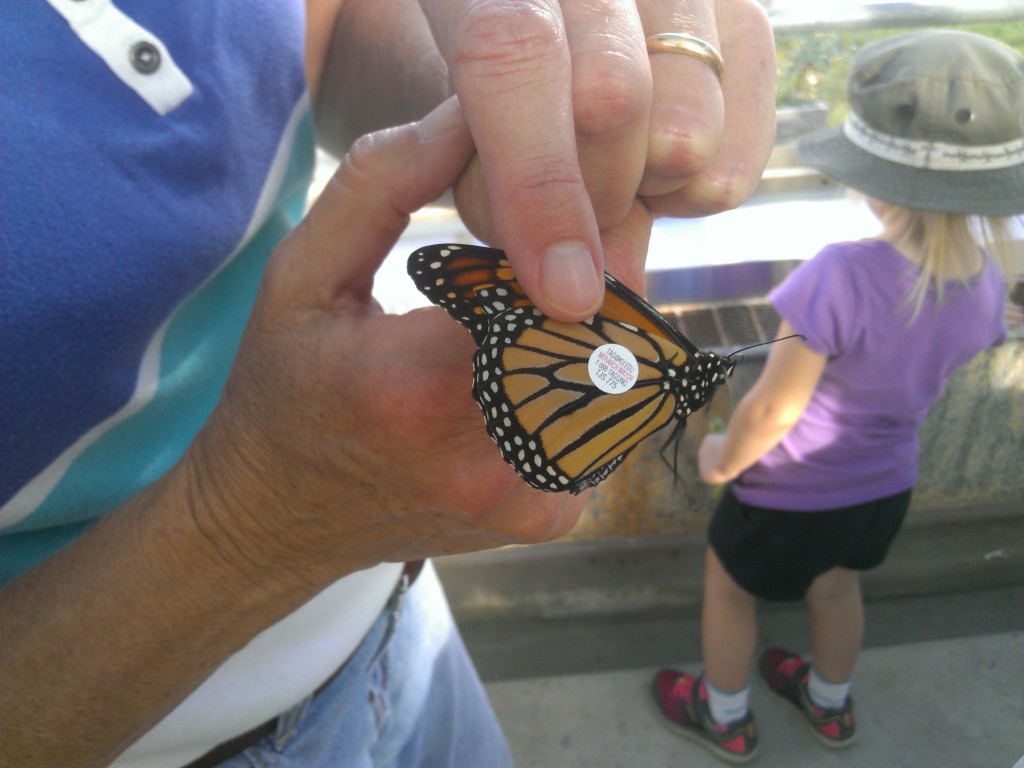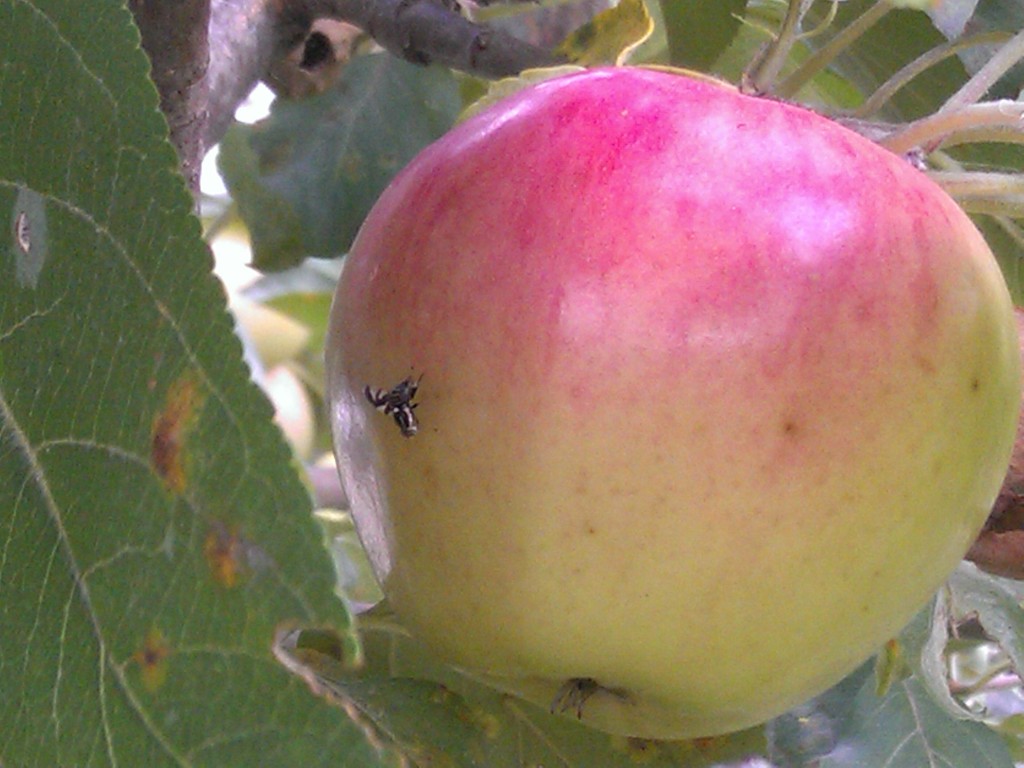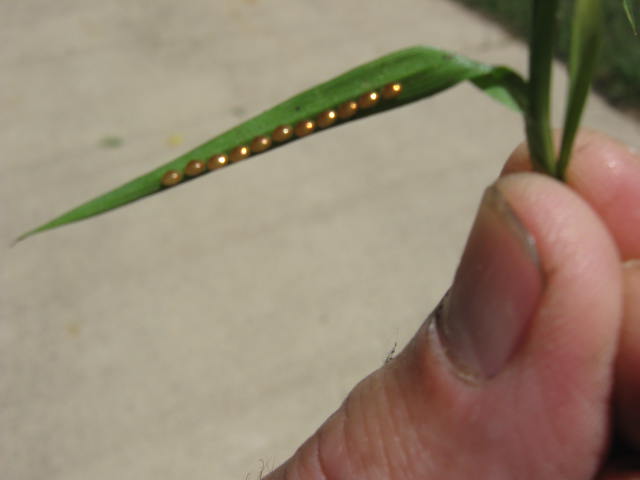Monarch butterflies are on the move heading south on their annual migration. Look closely next time you spot a Monarch and you might see a flash of white against the orange and black pattern of their wings, it very well could be a marked butterfly.
We spotted one last week near Ann Arbor. It was flying and feeding on flowers in the Matthaei Botanical Gardens.
I mentioned in a previous blog how the Monarch population has dwindled. Several groups, professional and amateur alike, are studying Monarchs trying to learn more about their behavior during migration. The butterfly we found was tagged by someone working with a group called Monarch Watch, a conservation education and research organization.
Each ultra-light weight polypropylene wing tag has an identification number and an email address printed on it to report your find.
I’m hoping that we found “our” butterfly after it flew and long and arduous journey from somewhere far away. But it could just as well have been tagged and released that day by someone nearby.
All tagging information is placed in a data base. Monarch Watch contacts both the tagger and the person finding the butterfly with the location of where it was tagged and found and, how far it traveled.
Most of the tagged butterflies in the United States and Canada are found dead. Ours however looked to be a strong flyer.
Reporting tagged butterflies helps researchers learn how Monarchs move across north america to their wintering places in Mexico.
Bob






